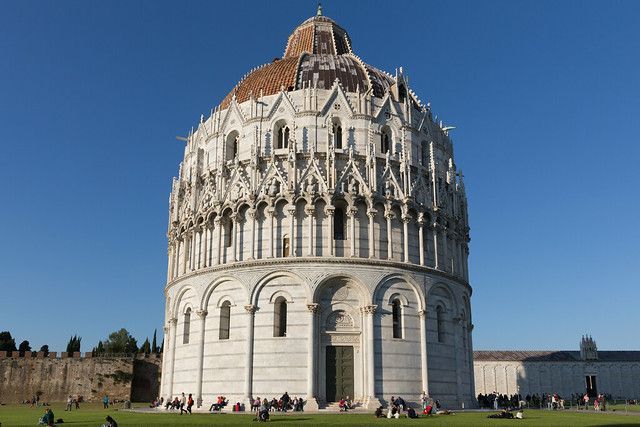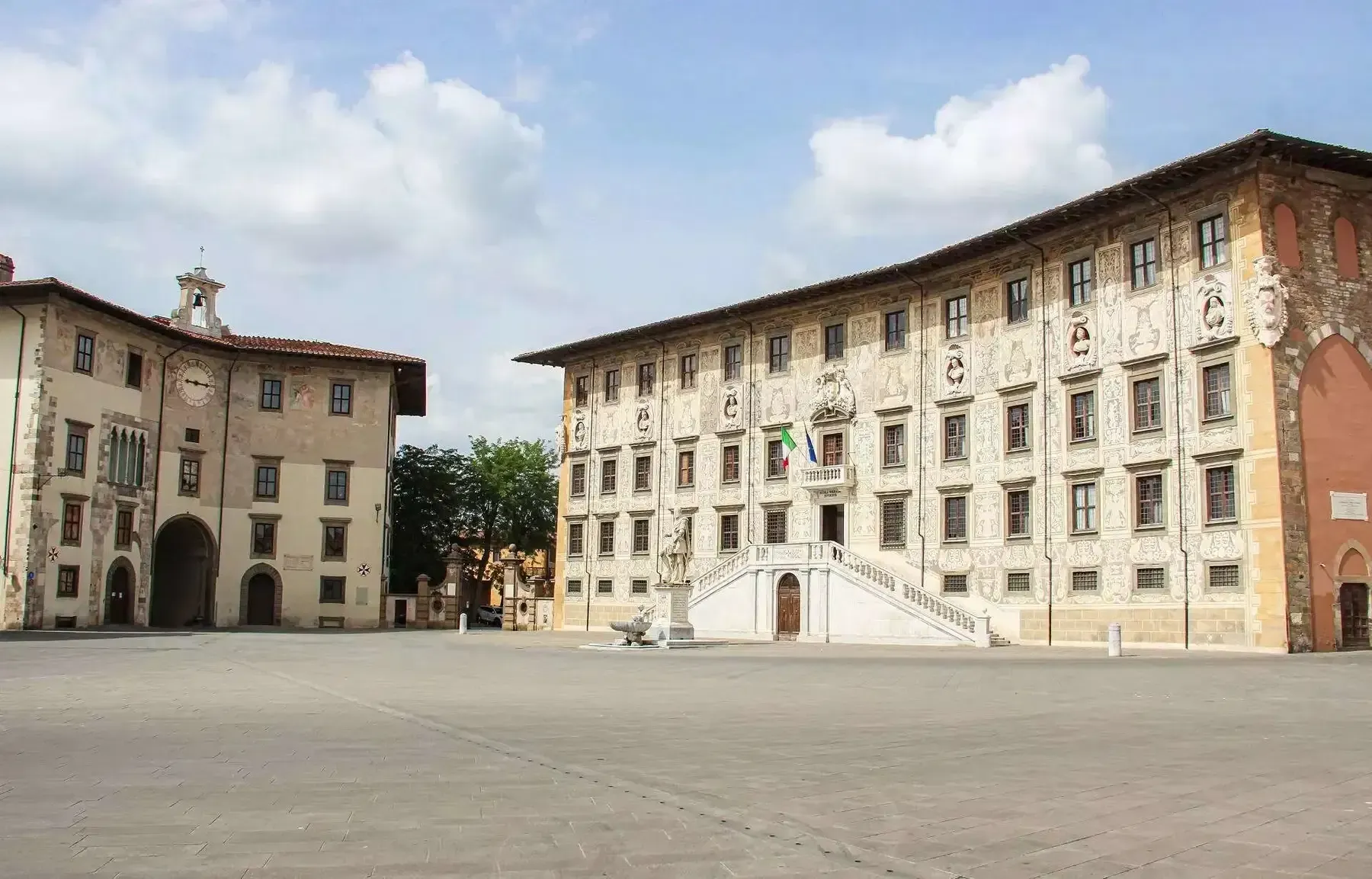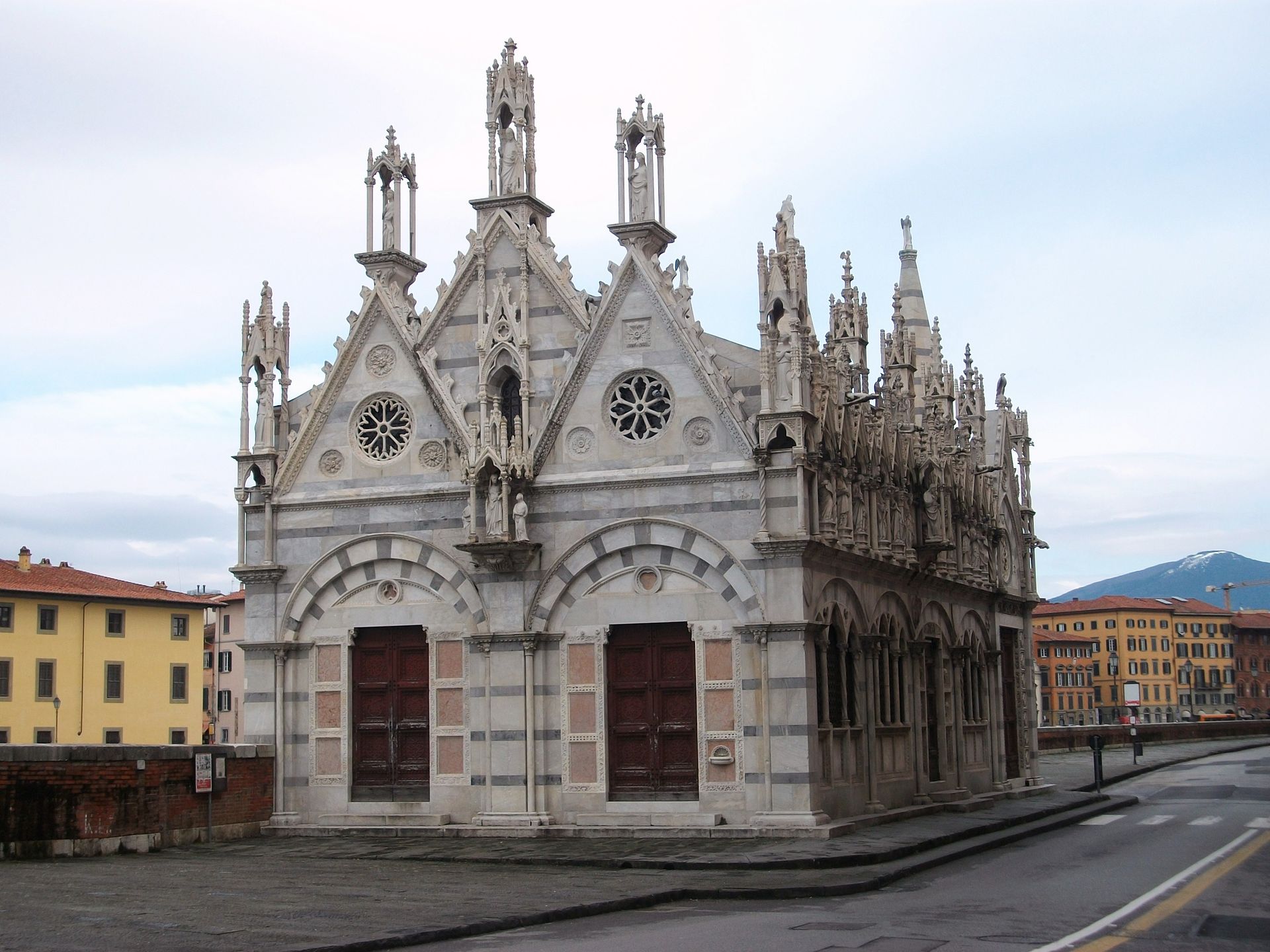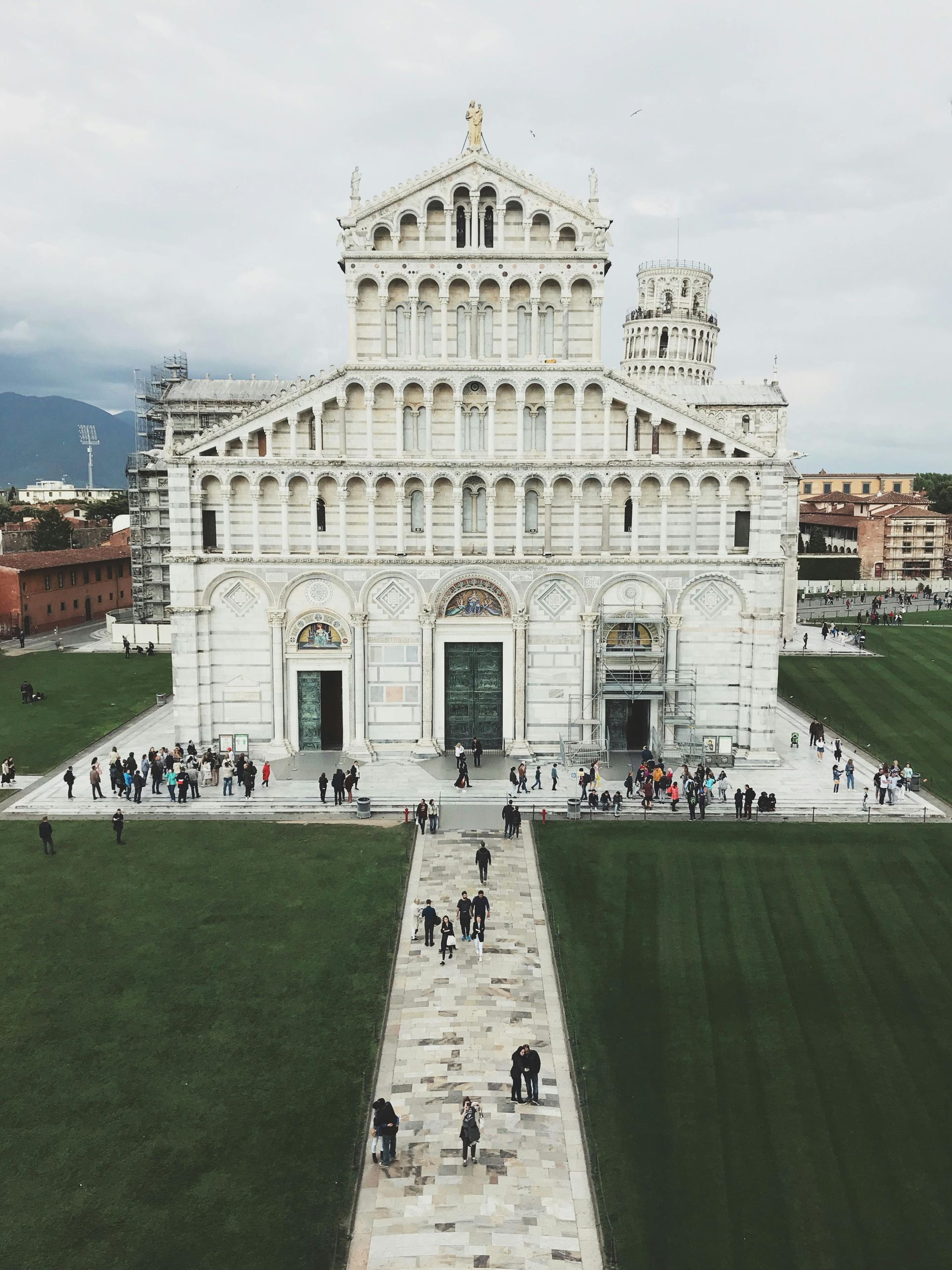THE LEANING TOWER OF PISA
The monumental heart of Pisa
On August 9, 1173, construction began on the foundation of what would become one of the most iconic monuments in the world: the Leaning Tower of Pisa.
This freestanding bell tower was designed not only as an architectural feat, but also as a symbolic tool to mark time—both human and divine—through its seven bells, one for each note of the musical scale. The tower was most likely built under the direction of architect Diotisalvi, who had earlier begun work on the nearby Baptistery.
However, the project faced an early challenge. Construction was halted at the third tier due to the subsidence of the ground beneath the base. The soil's softness—and the fact that the area once hosted a bend of the now-lost Auser River—caused instability, which led to the tower’s infamous lean.
A Long Pause and a Historic Tilt
These stability issues brought work to a standstill for several decades. It wasn’t until 1275 that construction resumed, this time under the direction of Giovanni di Simone and Giovanni Pisano. They added three additional tiers above the original structure. Interestingly, in an attempt to compensate for the tilt, these upper levels were built with a slight curve in the opposite direction.
The tower was finally completed in the mid-14th century with the addition of the bell chamber.
A Unique Architectural Marvel
The structure of the Leaning Tower is entirely unique. It consists of two concentric cylinders connected by an internal spiral staircase that leads all the way up to the bell chamber. The outer cylinder features six levels of arcaded loggias, where round arches rest on columns.
The base basin, or catino, is actually a 19th-century addition. Also noteworthy are the two bas-reliefs flanking the entrance door: one depicting the Port of Ostia, and the other, the Capitello dei Gemelli, symbolizing the Gemini constellation.
The Tower in Numbers
- Height: 58.36 meters
- External Diameter: 15 meters
- Weight: 14,453 tons
- Current Inclination: approximately 5.115°
- Stone Blocks Used: 29,424
- Stone Surface Area: 7,735 square meters
- Capitals: 207
- Stair Steps: 273














